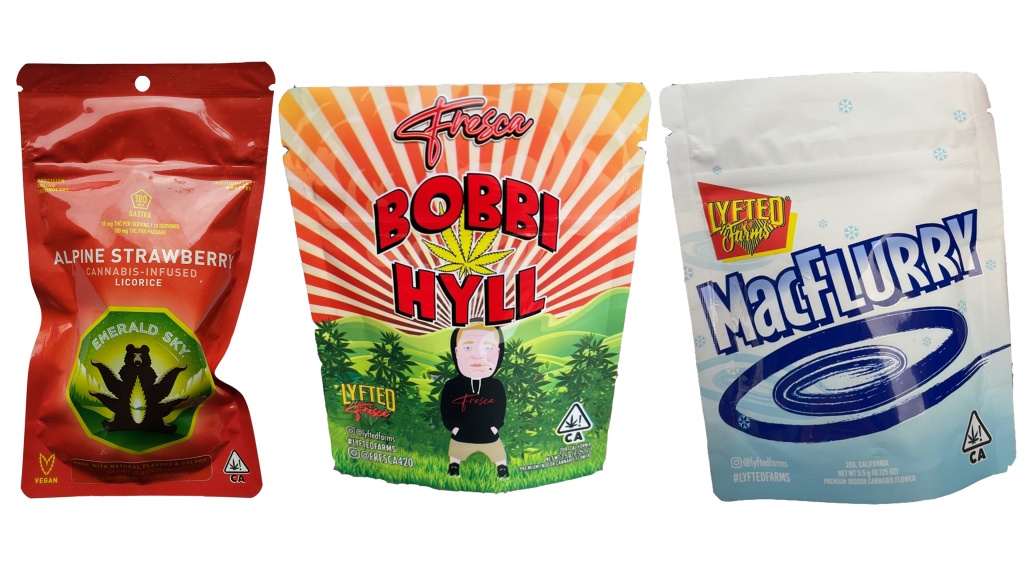
When California voters in 2016 supported the legalization and decriminalization of cannabis, we did not anticipate children would become collateral damage from an improperly regulated industry that prioritizes profit over children’s health.
What we now know is the marketing practices of the cannabis industry, which take a page from tobacco companies’ playbook by targeting children, are causing a direct threat to kids’ safety, wellbeing and overall health.
Since the passage of Proposition 64, I have seen hundreds of young children become ill because they accidentally ate a product that contained cannabis. One in 10 children who consume cannabis end up in the intensive care unit. Eighty-seven percent of children under the age of 5 who are hospitalized due to cannabis toxicity have consumed the drug in the form of candy.
The number of children hospitalized for cannabis toxicity in San Diego, where I practice, has quadrupled since the recreational legalization of cannabis products. Each time this happens I ask the same question: Why does a drug that could kill a child have to look like candy?
The answer is it doesn’t. Unfortunately, a combination of systemic regulatory failures and rampant cannabis commercialization has resulted in the proliferation of legal cannabis products masquerading as attractive children’s food.
This wasn’t supposed to happen. When voters approved Proposition 64, the California ballot measure to legalize marijuana, one of its clearly stated intentions was that “Marijuana products shall not be designed to be appealing to children or easily confused with commercially sold candy or foods that do not contain marijuana.”
Yet, go to most cannabis retailers now and you’ll find an assortment of highly psychoactive candies, snacks and sodas as well as high-potency flower, vapes and turbocharged concentrates bursting with vibrant animation, cartoon characters, fictional animals or popular children’s characters. Cannabis-loaded Cheese Nachos, Uncle Snoop’s Onion Rings, MacFlurrys, Cocoa Pebbles, Fanta Orange look-alikes, “Purple Smerfs” and a rainbow array of bright fruit-flavored candies have been mainstreamed and mass marketed into California homes.
This kind of marketing practice, one that directly connects products children view as safe with those that are addictive and can cause tremendous harm, is unacceptable and dangerous. It’s mindboggling that 63% of Californians last year voted to ban such practices for tobacco, yet lawmakers ignore just as great a threat to our children from cannabis.
It is clear that the cannabis industry is also targeting our kids. If you expose a young consumer, if you normalize a drug by weaving it into the fabric of a child’s physical and social environment, you probably have that consumer for life.
In the wake of Proposition 64, neither the cannabis industry nor the state has made a commitment to prioritizing the safety of youth. It is now our responsibility to do so and we have a tremendous opportunity to act.
Assembly Bill 1207, introduced by Jacqui Irwin, D-Thousand Oaks, would honor the promise and intent of Proposition 64 by taking common sense steps to create a safer, legal cannabis market by removing packaging and advertising attractive to children, and prohibiting flavored inhaled cannabis products.
There can be a world in which recreational cannabis is legal and children are kept safe. AB 1207 represents a critical first step in accomplishing this. The bill recently passed the California Assembly and now resides in the Senate.
As a pediatrician, I urge the Senate and Gov. Gavin Newsom to place the priority of children’s health over cannabis industry profits and support this bill without watering down its effectiveness.
Dr. Natalie Laub is a pediatrician and director of Clinical Research for the Chadwick Center for Children and Families at Rady Children’s Hospital San Diego. She is also an assistant clinical professor at UC San Diego.
𝗖𝗿𝗲𝗱𝗶𝘁𝘀, 𝗖𝗼𝗽𝘆𝗿𝗶𝗴𝗵𝘁 & 𝗖𝗼𝘂𝗿𝘁𝗲𝘀𝘆: www.mercurynews.com
𝗙𝗼𝗿 𝗮𝗻𝘆 𝗰𝗼𝗺𝗽𝗹𝗮𝗶𝗻𝘁𝘀 𝗿𝗲𝗴𝗮𝗿𝗱𝗶𝗻𝗴 𝗗𝗠𝗖𝗔,
𝗣𝗹𝗲𝗮𝘀𝗲 𝘀𝗲𝗻𝗱 𝘂𝘀 𝗮𝗻 𝗲𝗺𝗮𝗶𝗹 𝗮𝘁 dmca@enspirers.com


